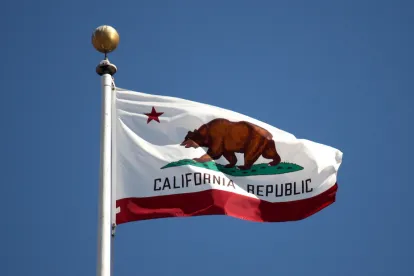On September 17, 2020, Governor Gavin Newsom signed Senate Bill No. 1383, which repealed the current California Family Rights Act (CFRA) and eliminated the California New Parent Leave Act, replacing those statutes with a new CFRA, which can be found at California Government Code Section 12945.2, et seq.
The new CFRA dramatically expands the CFRA’s reach to more employers and significantly increases the reasons for which an employee can take CFRA leave and the family members for whom CFRA leave may be used. The new law also substantially raises the risk that employers will have to provide 24 weeks of unpaid time off in 2021 and beyond, as compared to the current 12 weeks. Important aspects of the new law, as well as key considerations for employers, are set forth below.
Effective date
The new CFRA becomes effective January 1, 2021.
More covered employers
The current CFRA applies only to employers with 50 or more employees. The new CFRA lowers the employee threshold and applies to employers with five or more employees.
More eligible employees
Under the current CFRA—and under the federal Family and Medical Leave Act (FMLA)—an employee is eligible for leave only if (1) the employee works for an employer with 50 or more employees employed within 75 miles of the employee’s worksite; (2) the employee has worked with the employer for 12 months; and (3) the employee has worked for the employer for 1,250 hours within the previous 12 months. The new CFRA eliminates the “50 or more employees employed within 75 miles” eligibility requirement for CFRA leave.
More family members for whom an employee may take family medical leave
In addition to expanding the number of employers required to provide family medical leave and the number of employees who are eligible for family medical leave, the new CFRA also expands the categories of family members for which an employee can take family medical leave. Employees currently can take CFRA leave for their own serious health conditions, as well as the serious health condition of a spouse, registered domestic partner, parent, or child. The new CFRA adds grandparents, grandchildren, and siblings to the list.
More “children” for whom an employee may take family medical leave
The new CFRA also expands the definition of “child.” The current CFRA requires that the “child” be under 18 years of age or 18 and over and incapable of self-care because of a mental or physical disability at the time that CFRA leave is to begin. The new CFRA erases those boundaries, and an employee will be able to take leave to care for a domestic partner’s child and for a child with a serious health condition, regardless of the child’s age.
Military exigency added as a qualifying reason
While the FMLA provides employees with leave for certain qualifying military exigencies, the CFRA currently does not. The new CFRA, however, includes military exigency as a qualifying reason for leave and adds registered domestic partners to those for whom an employee can take military exigency leave.
Elimination of “key employee” exclusion
Currently, under the FMLA and the CFRA, an employer can refuse to reinstate an employee who is on an otherwise protected leave of absence if the employee is among the highest-paid 10 percent of the employer’s employees and if reinstating the employee will cause substantial and grievous injury to the employer’s operations. While the FMLA maintains this key employee exemption, the new CFRA eliminates it.
Expanded bonding leave
The new CFRA also expands parental rights to take leave to bond with a new child. Under the CFRA currently, an employer can insist that parents who each work for the same employer take only 12 weeks of parental leave between them, as opposed to each employee taking 12 weeks of parental leave. The new CFRA eliminates those limitations and allows each parent who works for the employer to take 12 weeks of baby-bonding leave.
Increased risk of 24 weeks of protected family and medical leave
Because of the new CFRA’s expanded reach, California employers will be at a significantly increased risk of having to provide 24 weeks of protected family medical leave, instead of just 12 weeks of leave. For example, an employee who takes 12 weeks of CFRA leave to care for a grandparent (or grandchild or sibling) will be using CFRA leave only and not leave under the FMLA. (The FMLA does not cover these family members.) The employees legally will be able to use their remaining FMLA leave to care for themselves, a spouse, a child, or a parent.
Small business mediation pilot program for CFRA claims
Governor Newsom also signed Assembly Bill No. 1867, which establishes a mediation pilot program for smaller employers with between 5 and 19 employees. The California Department of Fair Employment and Housing (DFEH) will administer the program. These smaller employers do not meet the employee number threshold for the current CFRA (50 or more employees) or the New Parent Leave Act (20 to 49 employees).
Either the employer or employee may request mediation through this pilot program. An employer must request mediation within 30 days of receipt of a right-to-sue notice alleging a violation of the new CFRA, while an employee must request mediation within 30 days of having received the right-to-sue notice. If either the employer or employee requests mediation, the employee cannot pursue a civil action until mediation is complete. In addition, the statute tolls the statute of limitation for the employee from the time that the employer or employee requests mediation until the DFEH completes the mediation.
Expanded paid leave
The new CFRA does not require paid leave; however, employees who take leave under the new CFRA or who take FMLA leave will be eligible to apply to the California Employment Development Department for paid family leave (PFL) benefits. The PFL program provides up to eight weeks of partial wage replacement to bond with a minor child within one year of the child’s birth or placement, or to care for a seriously ill parent, child, spouse, registered domestic partner, grandparent, grandchild, sibling, or parent-in-law. Beginning January 1, 2021, PFL also will provide partial wage replacement for employees who participate in certain qualifying military exigencies.
Getting Prepared
As a result of these significant changes to the CFRA, many California employers likely will want to start preparing to comply before the new law takes effect. Many smaller businesses may want to begin planning for employee leaves of absence that they may have previously never provided. Because the CFRA requires that all employers with handbooks include a CFRA policy, employers with handbooks may wish to review and revise their policies to include these important changes. Employers that currently use family medical leave request forms and other related forms may want to review and revise them if necessary, while smaller employers that never have complied with the CFRA before may wish to consider using such forms. Finally, employers will need to post a new CFRA poster by January 1, 2021, which will be available on the DFEH website either as an “all in one” poster or as a stand-alone poster before the start of 2021.





 />i
/>i

